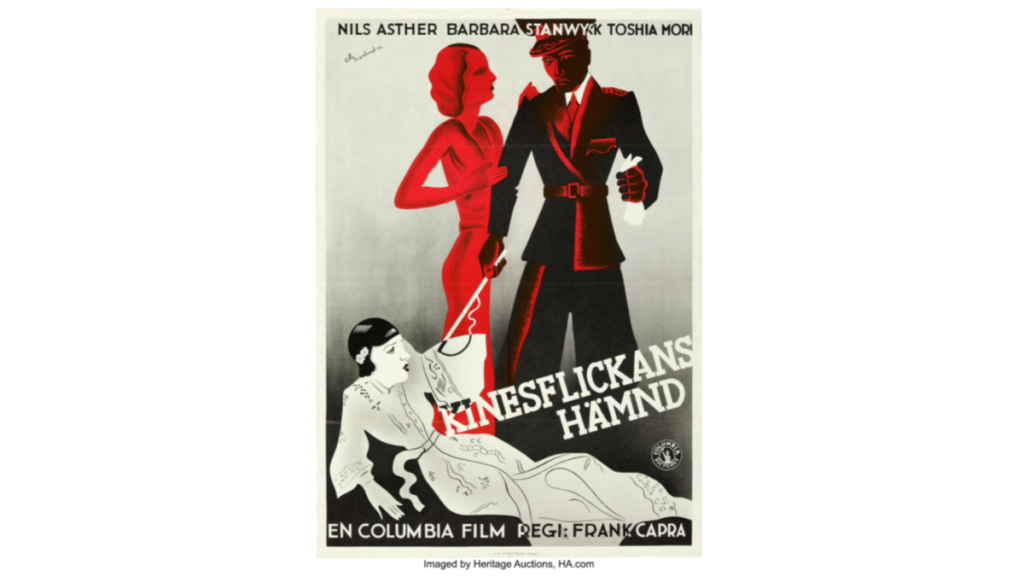Out of the items that I researched and wrote about for this signature sale, I may have learned from and connected most with the Swedish one sheet for The Bitter Tea of General Yen. I was initially drawn to it because I’m a big pre-Code Hollywood fan, especially of Barbara Stanwyck from that period (Baby Face is the epitome of that era’s insanity), but one aspect of the poster’s design hinted that there was a different story to be heard.
Much of the information I initially encountered in researching the film involved Stanwyck or director Frank Capra, which made sense to me as historically those two have been bigger draws for later viewers of The Bitter Tea of General Yen, but I was struck by how Nils Asther got top billing on the Swedish poster instead of Stanwyck. Asther wasn’t a name I was familiar with before learning more about this film, but in reading some of his story I came to understand just how bright his star was burning when the film came out in 1933, and I was fascinated with and surprisingly moved by his life around Hollywood and international film stardom.
For a little bit of background: Nils Asther was born in Denmark but primarily raised in Sweden, and gained fame through his work in Swedish silent films. During the silent era and into his work in talkies in the U.S. he was often compared to Swedish mega-star Greta Garbo, and lumping them together wasn’t totally out of left field. They came from similar backgrounds and ended up along the same path to global stardom (though Garbo’s fame far exceeded and long outlived Nilsen’s), and they were both queer! I was enthralled by the idea of a lavender marriage between them, which Asther tried to make happen (it is unclear, though, whether he was gay or bisexual), but the two continued to be lifelong friends even after his multiple failed proposals to her. Like many queer stars of the day, Asther’s public-facing life was largely heteronormative; he married and started a family soon after moving to Hollywood, but he divorced after 2 years. Furthermore, he and Garbo also both had more introverted personalities, which in Asther’s case conflicted so heavily with how Hollywood sought its stars to lead glamorous, incredibly publicly-exposed lives that later in life he regretted ever coming to the States in the first place.
Interesting, I think the Swedish poster reflects that dichotomy Asther felt between his public and private lives. Artist Olle Svanlund casts one side of General Yen’s face in a menacing red, fitting for Asther’s frustration with leading an inauthentic public life, and the other side is shrouded in darkness, reflecting Asther’s self-loathing from the conflicted life he led while working as an actor. I’m moved by the idea that his home country’s film artists still saw the more withdrawn, tortured persona they had fallen for during his rise to stardom in Sweden, unobscured by the glitz of Hollywood life. I think this Swedish poster, then, not only demonstrates the incredible power his name carried there by giving him top billing, but also shows the affection and understanding the country had for Asther during a tumultuous period of his life, when he struggled to find much genuine compassion for himself.
